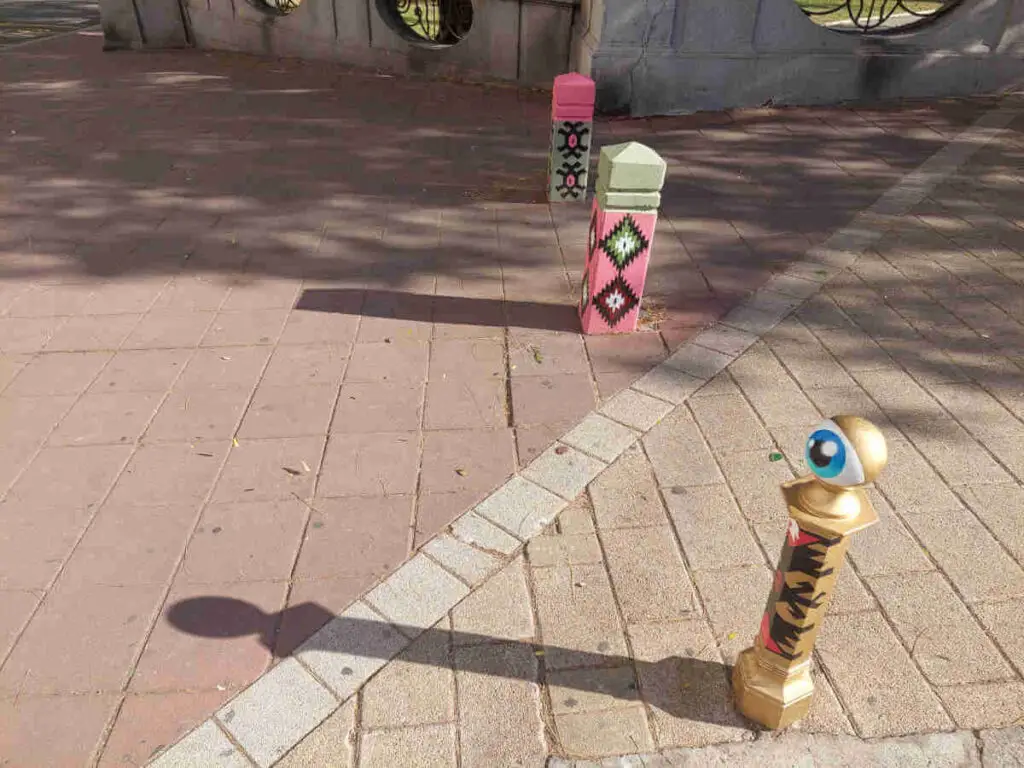Belgrade’s city center has recently been transformed into an open-air gallery thanks to the imaginative work of French street artist Le CyKlop. His signature style—brightly colored pillars with quirky designs—has captured the attention of passers-by and added a playful touch to the urban landscape. Le CyKlop’s street art, together with Ememem’s mosaics, invites people to stop, look, and interact with their surroundings in a whole new way.

The anti-parking pillars that dot Belgrade’s pavements have long been a mundane part of the city’s infrastructure, blending into the background as simple black posts. But Le CyKlop saw an opportunity to breathe life into these often-overlooked objects. His project in Belgrade is all about turning the ordinary into the extraordinary. Each pillar, once a nondescript urban fixture, has been painted in bold, vibrant colors and adorned with the artist’s signature oversized eye on its ball-shaped tip.

Le CyKlop’s work doesn’t just stop with the eyes. Some of the pillars are also decorated with motifs from traditional Serbian kilims, particularly those from Pirot, a city famous for its intricate and symbolic carpet designs.
By incorporating these local cultural elements into his art, Le CyKlop has not only brightened the city streets but also created a dialogue between modern art and Serbian heritage.

Le CyKlop’s mission is to free art from conventional surfaces like walls or canvases and bring it into public spaces in new ways. He aims to breathe life into everyday objects by placing an eye on them, intending to give them a soul and spark a sense of whimsy. His art is playful and anthropomorphic, drawing inspiration from toys, comics, and the animal kingdom.

By painting these everyday objects, Le CyKlop street art encourages us to see the city from a fresh perspective, one that invites curiosity and engagement. His work challenges the way we perceive public spaces, making us more aware of the hidden potential in the most unlikely places.

What makes Le CyKlop’s installations even more exciting is their accessibility. His art isn’t confined to galleries or museums; it’s out on the streets, where anyone and everyone can enjoy it. He describes his approach as both personal and participatory, creating art that engages with the public space in unexpected ways.


Leave a Reply